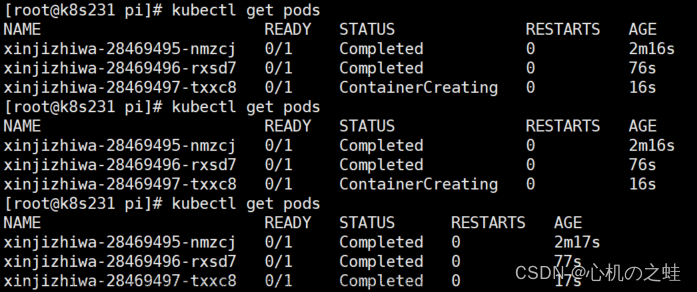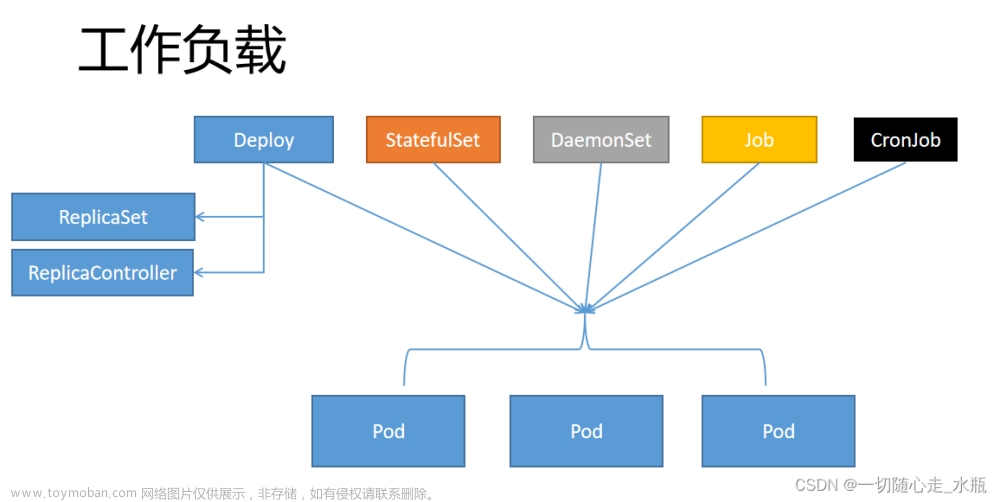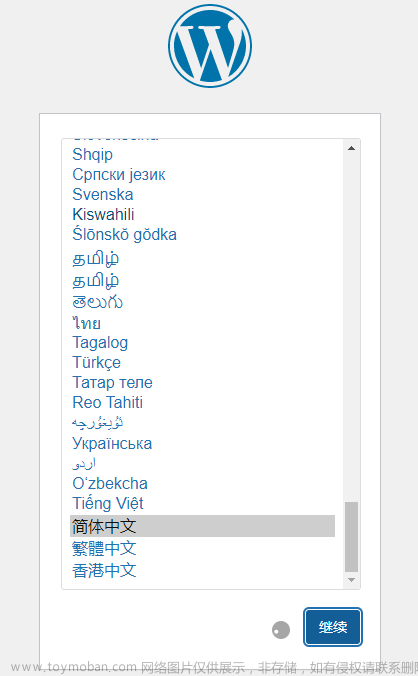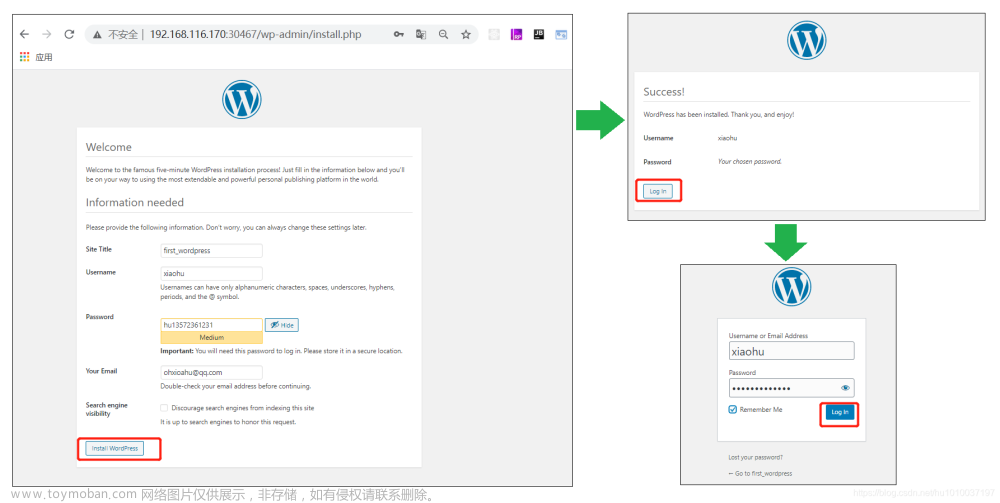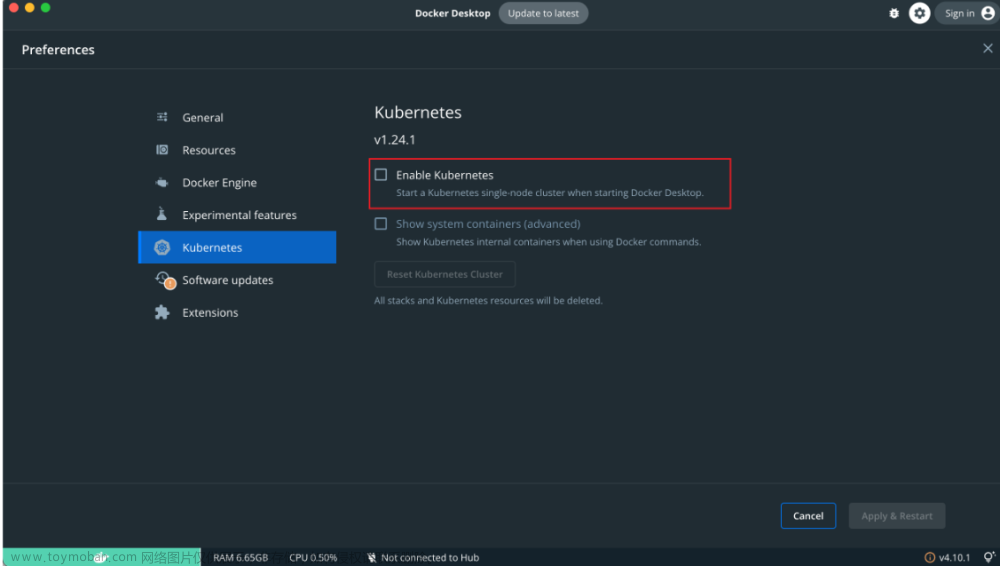摘要
CronJob的设计思想是基于Cron工具的,Cron是一种在Unix和类Unix系统中用于自动执行任务的工具。CronJob的设计思想是将Cron的功能引入到Kubernetes中,以便在集群中自动化和调度任务的执行。
CronJob的设计思想包括以下几个方面:
- 基于时间的调度:CronJob根据时间表来周期性地调度任务的执行。时间表采用Cron表达式格式,可以精确到分钟、小时、日期等。
- 可靠性和容错性:CronJob保证任务的可靠性和容错性。如果任务在指定时间内没有执行成功,CronJob会重新调度任务的执行,直到任务成功为止。此外,CronJob还提供了一些失败和成功的通知机制,方便管理员对任务的状态进行监控和管理。
- 可伸缩性:CronJob的设计允许用户在需要时灵活地扩展任务的执行。用户可以指定多个副本或并行执行的任务,以提高任务的执行效率。
- 与其他Kubernetes资源的集成:CronJob可以与其他Kubernetes资源进行集成,方便用户在任务执行过程中使用其他的资源,比如Pod、ConfigMap、Secret等。这样,用户可以更灵活地定义和配置任务的运行环境。
- 可视化和管理:CronJob可以通过Kubernetes的Dashboard或命令行工具进行可视化和管理。管理员可以方便地查看和编辑CronJob的配置,监控任务的执行状态,调整任务的调度策略等。
总的来说,CronJob的设计思想是为了简化和自动化周期性任务的管理和调度。通过引入Cron的思想和Kubernetes的特性,CronJob提供了一种方便、可靠和可扩展的方式来处理周期性任务。
Simply put
The design philosophy of CronJob in Kubernetes is to provide a resource object for specifying periodically running tasks. It is based on the functionality of the Cron tool, commonly used in Unix and Unix-like systems for automating tasks. The design principles of CronJob can be described as follows:
- Time-based scheduling: CronJob schedules the execution of tasks based on a specified time schedule. The time schedule follows the Cron expression format and can be configured at various granularities such as minutes, hours, dates, etc.
- Reliability and fault tolerance: CronJob ensures the reliability and fault-tolerance of tasks. If a task fails to execute successfully within the specified time, CronJob will reschedule the task until it succeeds. Additionally, CronJob provides mechanisms for failure and success notifications which facilitate monitoring and management of task statuses.
- Scalability: CronJob is designed to allow flexible scaling of task execution. Users can specify multiple replicas or parallel executions of tasks to enhance the efficiency of task execution.
- Integration with other Kubernetes resources: CronJob seamlessly integrates with other Kubernetes resources, enabling users to utilize additional resources like Pods, ConfigMaps, Secrets, etc., during task execution. This enables users to define and configure the task’s runtime environment more flexibly.
- Visualization and management: CronJob can be visualized and managed using the Kubernetes Dashboard or command-line tools. Administrators can easily view and edit CronJob configurations, monitor task execution status, and adjust scheduling policies.
In summary, the design philosophy of CronJob in Kubernetes aims to simplify and automate the management and scheduling of periodic tasks. It leverages the principles of Cron and takes advantage of Kubernetes features to provide a convenient, reliable, and scalable approach for handling recurring tasks.
Example
下面是CronJob在Kubernetes中的使用和设计实现说明:
- 定义CronJob:首先需要定义一个CronJob资源对象,该对象包含了任务的调度规则、容器的定义和其他相关配置。可以使用YAML文件来定义CronJob。以下是一个CronJob的示例定义:
apiVersion: batch/v1beta1
kind: CronJob
metadata:
name: my-cronjob
spec:
schedule: "*/5 * * * *"
jobTemplate:
spec:
template:
spec:
containers:
- name: my-container
image: my-image
command: ["my-command"]
restartPolicy: OnFailure
上述示例中的CronJob将每5分钟执行一次任务。任务的定义在jobTemplate.spec.template.spec.containers字段中,可以指定要运行的容器镜像、命令等。
- 创建CronJob:使用kubectl命令将定义好的CronJob资源对象提交到Kubernetes集群中,创建相应的CronJob实例。
kubectl apply -f my-cronjob.yaml
- 监控CronJob:一旦CronJob创建成功,Kubernetes将会根据定义的调度规则自动创建相应的Job实例。可以使用kubectl命令来监视CronJob的状态和执行情况。
kubectl get cronjobs
kubectl get jobs
kubectl describe cronjob my-cronjob
kubectl logs job/my-cronjob-xxxx
- 调整调度规则:如果需要修改CronJob的调度规则,可以直接更新CronJob的定义。
kubectl edit cronjob my-cronjob
- 删除CronJob:如果不再需要某个CronJob,可以使用kubectl命令将其删除。
kubectl delete cronjob my-cronjob
- 并发控制:为了防止任务并发执行,CronJob可以使用Kubernetes中的并发控制机制。可以通过设置
spec.concurrencyPolicy字段来控制任务的并发行为,例如只允许单个任务同时运行。
spec:
concurrencyPolicy: Forbid
在以上示例中,如果一个任务正在执行,任何新的调度将会被忽略。
总结起来,CronJob是Kubernetes中用于定期运行任务的一种资源对象,可以通过定义调度规则、容器的定义和其他配置来创建相应的任务。可以使用kubectl命令来创建、监视和管理CronJob。
On the other hand
In a distant future, mankind has achieved great technological advancements and embarked on an interstellar journey to explore the cosmos. They developed a sophisticated galactic civilization known as the Interstellar Federation. In this vast empire, clusters of star systems were managed efficiently using a centralized control system called Kubernetes.
Amidst the marvels of this advanced society, a group of scientists on a distant planet discovered a peculiar phenomenon. They observed that a particular star system, with three planets in perfect alignment, emitted a unique energy signal. Fascinated by this discovery, the scientists named this star system “Cronius” after an ancient Earth being associated with time.
Intrigued by the potential of harnessing this extraordinary energy, the Interstellar Federation decided to send an expedition to investigate further. A team of skilled astronauts and scientists were chosen for this important mission. Equipped with state-of-the-art spacecraft, they embarked on a perilous journey to Cronius, not knowing what awaited them.
Upon their arrival, the team marveled at the stunning sight of three planets in perfect alignment, radiating a mesmerizing aura. As they navigated through the star system, they discovered an ancient alien civilization that had once thrived in this celestial wonderland. The alien race, known as the Cronites, were an enigmatic species with unparalleled knowledge in harnessing time.
The Cronites revealed a remarkable secret to the Interstellar Federation team. They possessed the ability to manipulate time, bending it to their will through an ancient artifact known as the Chronosphere. This artifact allowed them to create and regulate periodic events according to precise schedules. These events included the cyclic awakening and hibernation of their society, ensuring the optimal utilization of resources and the preservation of their culture.
Astounded by this revelation, the Interstellar Federation scientists recognized the striking similarity between the ancient Cronite civilization and Kubernetes, the resource management system that governed their own empire. They realized that their expedition to Cronius was not just a scientific exploration, but a chance to learn from a highly advanced ancient civilization.
The scientists proposed a collaboration with the Cronites to study and replicate their sophisticated time management system. They envisioned integrating the Cronite Chronosphere technology into Kubernetes, creating a new resource object called “CronJob.” This groundbreaking implementation would enable the Interstellar Federation to schedule and manage periodic tasks and jobs across the vast expanse of their empire seamlessly.
With the fusion of Cronite wisdom and contemporary technology, the Interstellar Federation’s empire reached new heights. CronJobs became an essential component of their resource management strategy. They could now efficiently execute periodic tasks such as spacecraft maintenance, research simulations, and energy production without any human intervention. The empire thrived, and its citizens reaped the benefits of a harmonious and well-coordinated universe.文章来源:https://www.toymoban.com/news/detail-704708.html
The tale of Cronius and the integration of CronJobs into Kubernetes became a symbol of progress and unity within the Interstellar Federation. As they continued their quest for knowledge across the cosmos, they celebrated the serendipitous encounter with the Cronite civilization and the extraordinary technology that revolutionized the way they managed time and resources.文章来源地址https://www.toymoban.com/news/detail-704708.html
到了这里,关于CronJob in K8s的文章就介绍完了。如果您还想了解更多内容,请在右上角搜索TOY模板网以前的文章或继续浏览下面的相关文章,希望大家以后多多支持TOY模板网!




